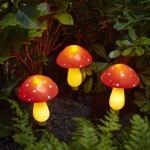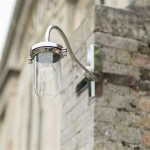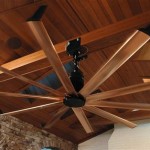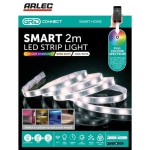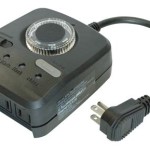Low Light Outdoor Plants Thriving in Melbourne's Shady Spots
Melbourne's climate, while generally mild, presents unique challenges for gardeners, particularly when it comes to areas with limited direct sunlight. Many gardens and balconies, especially in urban settings, are shaded by buildings, fences, or established trees. Selecting plants that can thrive in these low-light conditions is crucial for creating a vibrant and healthy outdoor space. This article explores a range of suitable plant species for low-light outdoor environments in Melbourne, providing guidance for their selection, care, and optimal growing conditions.
Defining low-light conditions is essential. In this context, low light refers to areas receiving less than three hours of direct sunlight per day, or dappled sunlight throughout the day due to canopy cover. It is important to differentiate this from full shade, which receives no direct sunlight at all. The plants discussed below are adaptable to environments ranging from partial shade to areas with filtered sunlight.
Understanding Melbourne's Microclimates and Their Impact
Melbourne’s climate is notoriously variable, and even within the metropolitan area, distinct microclimates exist. Factors such as proximity to the coast, elevation, and exposure to wind influence temperature, humidity, and sunlight intensity. When selecting plants for low-light areas, it is essential to consider the specific microclimate of the garden or balcony. For instance, a sheltered courtyard in an inner-city suburb might offer more protection from frost than a balcony facing the open bay, even though both have limited sunlight.
Soil conditions also play a vital role. Shaded areas often retain more moisture, which can lead to waterlogged soil if drainage is poor. Amending the soil with organic matter, such as compost or well-rotted manure, improves drainage and provides essential nutrients. Raised garden beds or container gardening are also excellent options for improving drainage and controlling soil composition in low-light areas.
Furthermore, it’s important to observe the space throughout the year. The amount of sunlight reaching a particular area can change significantly with the seasons as the sun's path shifts and deciduous trees lose their leaves. This seasonal variation should be considered when planning the garden layout and selecting appropriate plants.
Top Plant Choices for Low-Light Outdoor Spaces in Melbourne
The following list presents a selection of plants well-suited to low-light outdoor conditions in Melbourne, categorized by their growth habit (ground cover, shrubs, climbers, etc.) to aid in garden design.
Ground Covers: Ground covers are ideal for suppressing weeds, preventing soil erosion, and adding visual appeal to shaded areas. They can create a lush carpet of greenery beneath trees or shrubs.
Australian Native Violet (Viola hederacea): This native ground cover thrives in moist, shaded conditions. It produces small, delicate purple and white flowers and spreads readily, making it an effective ground cover. Regular watering is essential, especially during dry periods.
Kidney Weed (Dichondra repens): Another excellent native option, Kidney Weed features small, kidney-shaped leaves and forms a dense mat. It tolerates moderate foot traffic and is well-suited to planting between pavers or around stepping stones. It prefers moist, well-drained soil.
Shrubs: Shrubs provide structure and form to the garden, adding height and visual interest. They can be used as hedging plants, focal points, or to fill in gaps between larger trees.
Camellias (Camellia japonica and Camellia sasanqua): Camellias are renowned for their beautiful flowers and glossy green foliage. They thrive in acidic soil and prefer dappled shade. Camellia japonica typically blooms in winter and early spring, while Camellia sasanqua flowers in autumn and early winter, providing extended seasonal interest. Regular pruning is recommended to maintain their shape and promote flowering.
Azaleas (Rhododendron spp.): Azaleas are another excellent choice for shaded gardens. They offer a wide range of flower colors, from vibrant reds and pinks to delicate whites and purples. Like camellias, they prefer acidic soil and require regular watering, especially during flowering. They benefit from annual pruning after flowering to encourage bushy growth.
Hydrangeas (Hydrangea macrophylla): Hydrangeas are known for their large, showy flower heads. They thrive in moist, well-drained soil and require protection from the hot afternoon sun. The color of the flowers can be influenced by the pH of the soil; acidic soil promotes blue flowers, while alkaline soil produces pink flowers. Regular watering is crucial, particularly during dry spells.
Climbers: Climbers can be used to cover walls, fences, or pergolas, adding vertical interest to the garden. They can create a lush backdrop for other plants and provide privacy.
Climbing Hydrangea (Hydrangea petiolaris): This deciduous climber features attractive, heart-shaped leaves and clusters of white flowers in summer. It clings to surfaces with aerial rootlets and can reach considerable heights. It prefers moist, well-drained soil and a sheltered position.
Creeping Fig (Ficus pumila): Creeping Fig is a fast-growing evergreen climber that adheres to walls and other surfaces. It has small, textured leaves and creates a dense, textured covering. It is relatively low-maintenance and tolerates a wide range of soil conditions. It is important to note that it can be invasive in some areas, so regular pruning may be necessary.
Ferns: Ferns are well-suited to shaded, moist environments and offer a range of textures and forms. They can be used as ground covers, accent plants, or in hanging baskets.
Maidenhair Fern (Adiantum spp.): Maidenhair ferns are delicate and elegant, with finely divided, lacy fronds. They require consistently moist soil and high humidity. They are well-suited to growing in pots or terrariums.
Tree Ferns (Dicksonia antarctica): Tree ferns are iconic plants that add a touch of the tropics to any garden. They thrive in shaded, moist conditions and require regular watering, especially during dry periods. They can grow to considerable heights and provide a dramatic focal point.
Other Considerations: Beyond the species listed above, many other plants can thrive in low-light conditions in Melbourne. Hostas, with their attractive foliage, are well-suited to shaded gardens. Impatiens offer a profusion of colorful flowers throughout the summer. Lilyturf (Liriope muscari) is a hardy evergreen perennial that provides a neat border or ground cover.
Essential Care Tips for Low-Light Outdoor Plants
Even shade-tolerant plants require proper care to thrive. The following tips provide guidance for maintaining healthy and vibrant plants in low-light outdoor spaces.
Watering: While shaded areas tend to retain more moisture, it is still important to monitor soil moisture levels and water plants regularly, especially during dry periods. Avoid overwatering, as this can lead to root rot. Use a moisture meter or simply insert a finger into the soil to check the moisture level. Water deeply and less frequently, allowing the soil to dry out slightly between waterings.
Fertilizing: Plants growing in low-light conditions may require less fertilizer than those in full sun. However, regular fertilization is still essential to provide them with the nutrients they need. Use a slow-release fertilizer or a liquid fertilizer diluted to half strength. Apply fertilizer in spring and autumn, when plants are actively growing.
Pruning: Regular pruning helps to maintain the shape of plants, remove dead or diseased growth, and promote flowering. Prune shrubs and climbers after flowering. Remove any yellowing or dead leaves from ferns and ground covers. Use sharp, clean pruning tools to prevent the spread of disease.
Pest and Disease Control: Monitor plants regularly for signs of pests or diseases. Common pests in shaded gardens include snails, slugs, and aphids. Control these pests with organic methods, such as hand-picking, beer traps (for snails and slugs), or insecticidal soap (for aphids). Diseases such as powdery mildew can also occur in humid, shaded conditions. Improve air circulation by pruning plants and spacing them adequately. Treat affected plants with a fungicide if necessary.
Soil Management: Maintaining healthy soil is crucial for plant growth. Amend the soil with organic matter regularly to improve drainage, aeration, and nutrient content. Mulch around plants to suppress weeds, retain moisture, and regulate soil temperature. Check the soil pH periodically and adjust as needed to suit the specific needs of the plants.
By understanding the specific conditions of the outdoor space, selecting appropriate plant species, and providing proper care, it is possible to create a thriving and beautiful garden even in areas with limited sunlight in Melbourne.

Shade Plants For Small Gardens Flower Power

Shade Plants For Small Gardens Flower Power

8 Summer Flowers For Shady Gardens About The Garden

Shade Plants For Small Gardens Flower Power

Shade Plants For Small Gardens Flower Power

8 Shade Loving Plants For Your Garden Better Homes And Gardens

7 Shade Loving Plants Jimsmowing Com Au

Shade Plants For Small Gardens Flower Power

Top 8 Shade Loving Plants For Your Garden Holman Industries
Shade Gardening
